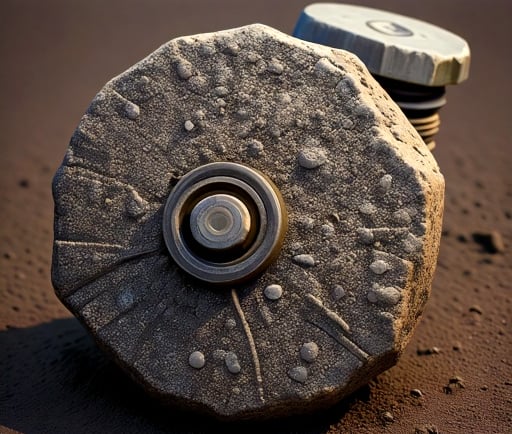Unearthing the Secrets: A 300 Million Year Old Bolt and Screw in Saraksee, Russia


Introduction to Saraksee's Geological Marvel
Saraksee, a quaint village in Russia, holds secrets hidden beneath its ancient layers of rock. This enchanting location is not only captivating due to its picturesque landscapes but also because it is home to a remarkable discovery that has left scientists and historians puzzled: a bolt and screw that dates back an astonishing 300 million years. This relic challenges our understanding of technology and human development in prehistoric times.
The Discovery: How It All Began
The story of this extraordinary find began when local geologists were conducting routine explorations of the rock formations in Saraksee. During their investigations, they stumbled upon an unusual metal object embedded within the eroded layers of sedimentary rock. Upon further examination, it became evident that this object was not merely a natural formation; it was a man-made bolt and screw.
The implications of this discovery are profound. The existence of such an artifact suggests that intelligent life may have existed far earlier than previously thought, potentially rewriting the timeline of technological advancement. As researchers delve deeper into this phenomenon, they are faced with questions regarding the origins and functions of the bolt and screw, spurring a wave of archaeological interest.
Scientific Investigations: Analyzing the Artifact
Following the discovery, teams of scientists from various disciplines gathered in Saraksee to analyze the artifacts. Geologists, archaeologists, and historians collaborated to study the surrounding rock layers, aiming to understand the context in which these objects were found. The rock formations are estimated to be around 300 million years old, dating back to the Carboniferous period, a time when lush forests thrived and life forms began to diversify.
Through advanced dating techniques and material analysis, experts are working tirelessly to ascertain the composition of the bolt and screw. Preliminary findings suggest that the metals used exhibit traits consistent with alloys developed by ancient civilizations, yet the timeline complicates this assumption. This paradox has led to various theories, including the possibility of ancient civilizations with advanced metallurgy or even extraterrestrial influences.
The Broader Implications of the Discovery
The discovery of the bolt and screw in Saraksee extends far beyond the village limits, raising fundamental questions about human history and technological evolution. If such advanced artifacts are indeed 300 million years old, we may need to reconsider our current understanding of technological progression. This finding could indicate the presence of knowledge and engineering skills that have long been lost to time.
As more research unfolds, the story of this ancient bolt and screw will likely capture the imagination of people worldwide. It serves as a potent reminder of the mysteries that lie hidden in our planet's layers and the relentless pursuit of knowledge that defines human nature. The case of Saraksee continues to inspire curiosity and debate, inviting us to ponder the untold tales buried in the Earth's depths.
